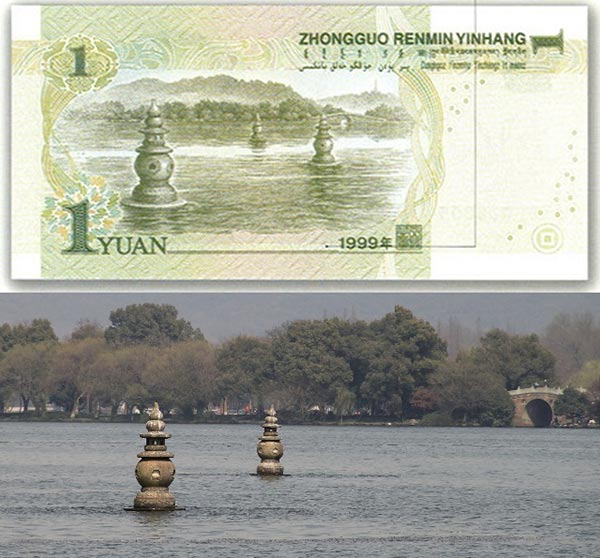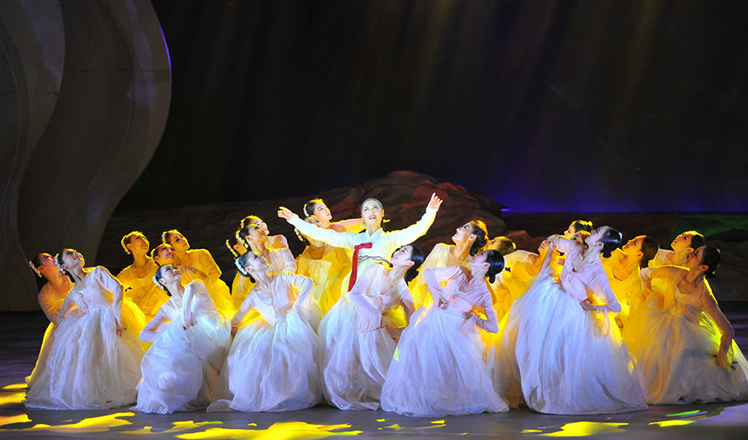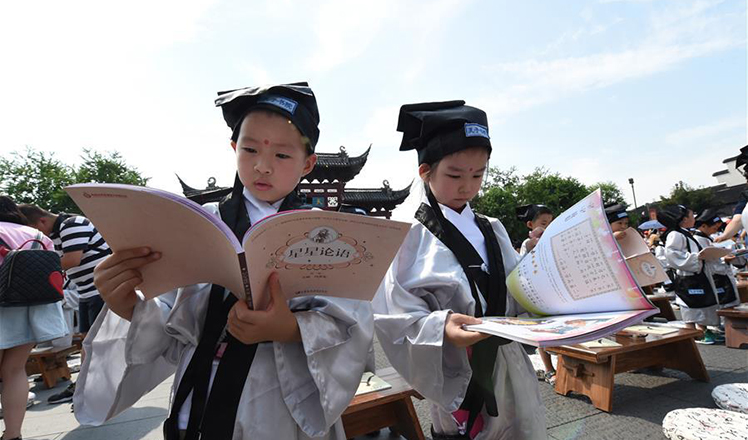The three pagodas-a scene from dreams
Updated: 2016-09-02 09:33
By Raymond Zhou(China Daily)
|
||||||||
 |
|
The landscape of the pagodas is featured on the 1-yuan note. [Photo provided to China Daily] |
The real answer lies in the three pagodas, which imperceptibly divide the water into three parts.
Again, ignore your scientific mind. Call up your inner poet.
As each pagoda lights up a limited area around it, the vastness of the unlit water is simply discounted, rendering it into three pools.
Well, this is just one justification, but it is as good as another.
If you don't believe me, just whip out your wallet and look at the back of a 1-yuan note.
It features a daylight scene of the three familiar pagodas. But given the angle of the picture, the distant pagoda could not possibly be there. Call it artistic license, which, if you think of it, is not that different from a perspective-free scroll painting.
The pagodas were built by Song Dynasty (960-1279) poet and governor Su Shi, who was also responsible for the Su Causeway on the lake.
He meant them to be watermarks to gauge the necessity of dredging of the lake. They were rebuilt in the Ming Dynasty (1368-1644), and the nearby islet was constructed from silt and mud in 1607, with improvements and architectural additions later.
Meanwhile, the origin of the structures being known has not prevented people from coming up with their own versions, many of which involve a snake-headed demon.
Unlike the famous White Snake spirit, this fish demon is a villain who snatches local girls or thrashes the city with storms.
- Record number of Americans dislike Hillary Clinton: poll
- Mexico contradicts Trump on paying for border wall, clouding visit
- First direct commercial flight from US in over 50 years arrives in Cuba
- Typhoon kills 9 in Japan's old people's home as toll hits 11
- Brazil leader's impeachment trial enters final stretch
- 94th anniv. of Victory Day marked in Turkey

 Korean ethnic dance drama shines in Beijing
Korean ethnic dance drama shines in Beijing
 Children explore science and technology at museum
Children explore science and technology at museum
 Children wearing Hanfu attend writing ceremony
Children wearing Hanfu attend writing ceremony
 73rd Venice Film Festival opens in Italy
73rd Venice Film Festival opens in Italy
 'World's most dangerous village' draws visitors
'World's most dangerous village' draws visitors
 Chinese female pilots fly fighter-bomber JH-7
Chinese female pilots fly fighter-bomber JH-7
 African trainees learn lion dance in NE China's Dalian
African trainees learn lion dance in NE China's Dalian
 Left-behind children back to hometown after spending summer with family
Left-behind children back to hometown after spending summer with family
Most Viewed
Editor's Picks

|

|

|

|

|

|
Today's Top News
Trump outlines anti-terror plan, proposing extreme vetting for immigrants
Phelps puts spotlight on cupping
US launches airstrikes against IS targets in Libya's Sirte
Ministry slams US-Korean THAAD deployment
Two police officers shot at protest in Dallas
Abe's blame game reveals his policies failing to get results
Ending wildlife trafficking must be policy priority in Asia
Effects of supply-side reform take time to be seen
US Weekly

|

|







